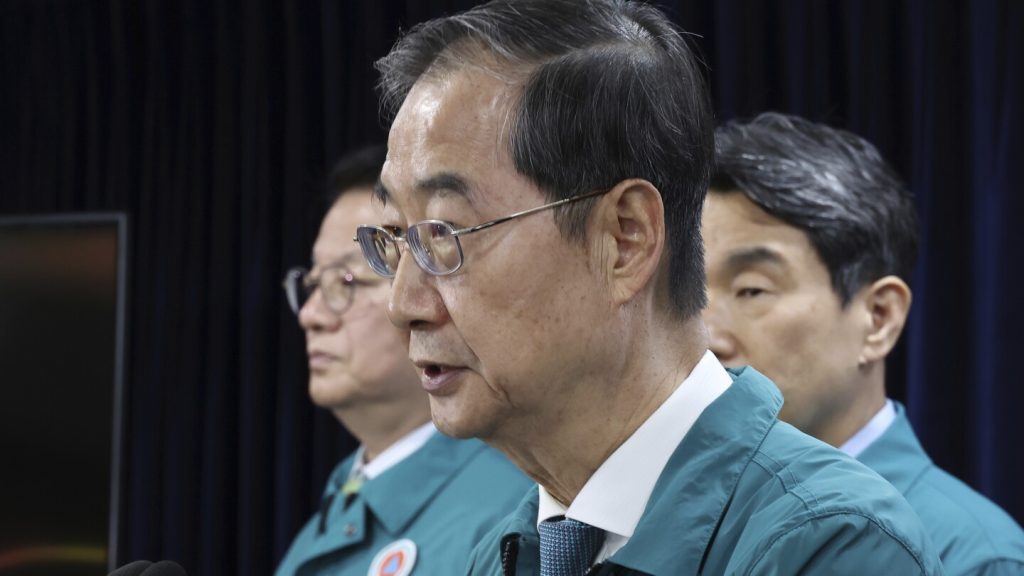The South Korean government has announced a plan to slow down the increase in admissions to the country’s medical schools in an effort to end a weeks-long strike by thousands of doctors. The strike began in late February after the government announced a plan to recruit 2,000 more students next year, which would have increased the current cap of 3,058 by about two-thirds. The compromise proposal put forward by the presidents of six state-run universities will allow medical schools to gradually increase admissions over several years, easing concerns that a sudden influx of students would overwhelm the universities and compromise the quality of medical services in the country.
Prime Minister Han Duck-soo cited concerns about the strain on hospitals caused by the prolonged strike by junior doctors as the reason for adopting the compromise proposal. Under the new plan, medical schools will be allowed to lower their quotas for new places by up to 50% of the target set for 2025, potentially reducing the number of new places to around 1,000 instead of 2,000. However, officials have emphasized that the compromise is temporary and that schools will still be required to finalize plans by April to increase admissions by the full 2,000 by 2026. Despite the government’s efforts to address the concerns of doctors’ groups, which have called for the plan to be scrapped entirely, there is still a call for striking doctors to return to work and engage in negotiations with the government.
The government’s decision to slow down the increase in medical school admissions comes amid growing demands for more doctors to address the needs of South Korea’s fast-aging population. With more than 90% of the country’s 13,000 medical interns and residents on strike, there are concerns about the impact of the strike on the delivery of healthcare services. Han emphasized the government’s commitment to addressing the issue of healthcare service vacuums caused by the strike and highlighted the need for bold decisions to meet the demands of patients and the wider public. The compromise proposal aims to strike a balance between the government’s goal of increasing the number of doctors and the concerns raised by doctors’ groups about the potential negative effects of a sudden increase in medical school admissions.
As the strike by doctors continues, there is a sense of urgency to find a resolution that addresses the concerns of both the government and the medical professionals. The compromise proposal announced by the government is seen as a temporary measure to ease tensions and allow for further negotiations between the two parties. The striking doctors have been urged to return to work and engage in dialogue with the government to find a solution that ensures the delivery of quality healthcare services while also addressing the need for more doctors to meet the healthcare needs of the country’s aging population. It remains to be seen how the ongoing negotiations will unfold and whether a resolution can be reached that satisfies all parties involved.
Overall, the government’s decision to slow down the increase in medical school admissions reflects a willingness to address the concerns of doctors and find a middle ground that balances the need for more doctors with the capacity of medical schools to accommodate an influx of students. The compromise proposal aims to provide a temporary solution while allowing for further discussions on how best to address the challenges facing the healthcare system in South Korea. With both the government and doctors’ groups expressing their positions on the issue, there is hope that a resolution can be reached that benefits all stakeholders and ensures the continued delivery of quality healthcare services to the population.


